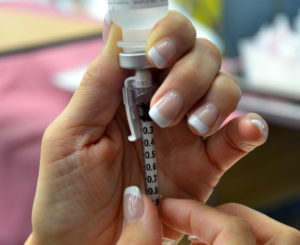David Barrett, University of Hull
Last week’s EBN blog explored the importance of safe medication administration and one specific intervention – double-checking – that may reduce errors. This week’s blog focuses on of the most common contributing factors to errors and how nurses and healthcare organisations can work to reduce the risks to patients.

Despite increased awareness of the risks associated with medication errors, they continue to occur with alarming prevalence. A recent report has estimated that within the NHS in England, there are approximately 237 million medication errors made per year, of which 66 million are potentially clinically significant, with over 700 deaths caused. In addition to the impact on patients and their relatives, these errors cost the NHS millions of pounds annually.
The causes of medication errors have been studied intensely over decades, and various strategies implemented to try and mitigate them. Though issues such as communication failure and time pressures are factors in many errors, the issues most commonly identified as leading to errors are distractions and interruptions.
As nurses, all of us have experienced distractions and interruptions at work – whether from phone calls, colleagues, call bells, patients or relatives – whilst administering medicines. These interruptions do not simply slow down the process of administration: by breaking concentration and requiring nurses to repeatedly reengage, interruptions and distractions increase the risk of errors being made (Westbrook et al, 2010).

Knowledge of the fact that interruptions and distractions increase the risk of errors have led to them becoming the focus of interventions designed to increase patient safety. Innovations such as ‘do not disturb’ tabards/sashes being worn, allocation of staff to deal with non-medicine-related tasks, or isolated drug preparation areas have been piloted and implemented with varying levels of success (Raban & Westbrook, 2014). Some of these interventions take their inspiration from the airline industry, where the dangers of distraction and interruption on the flight deck were tackled through the introduction of the ‘sterile cockpit’ rule, in which non-essential activities are prohibited during critical times during flight (e.g. take-off and landing).
Though organisational efforts to prevent distraction and interruption are crucial, nurses also need to develop personal approaches to deal with them. Previous work has highlighted how some nurses are able to develop sophisticated ‘interruption handling strategies’ that enable them to block or mediate any distractions, and maintain focus on their primary task (Colligan & Bass, 2012).
As a professional group, nurses are integral to the different stages of medication management and therefore play a crucial role in the prevention of errors. To do so, nurses need to implement a range of organisational and personal strategies to help reduce the frequency and impact of interruptions. From a research perspective, more work is required to identify the most effective interventions to reduce and manage interruptions as part of the battle against medication errors.
References
Colligan L, Bass EJ (2012) Interruption handling strategies during paediatric medication administration BMJ Quality and Safety 21:912-917.
Elliott R, et al (2018)Prevalence and economic burden of medication errors in the NHS in England.Available from http://www.eepru.org.uk/wp-content/uploads/2018/02/eepru-report-medication-error-feb-2018.pdf
Raban MZ, Westbrook JI (2014) Are interventions to reduce interruptions and errors during medication administration effective?: a systematic review BMJ Quality and Safety 23:414-421.
Westbrook JI, et al (2010). Association of Interruptions with an Increased Risk and Severity of Medication Administration Errors. Archives of Internal Medicine. 170(8):683–690. doi:10.1001/archinternmed.2010.65